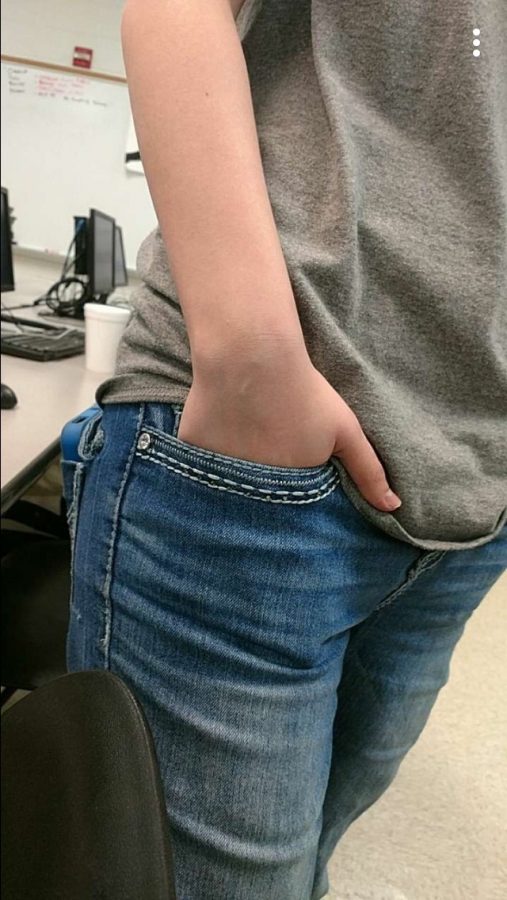Pockets—Size Does Matter
May 16, 2019
Every girl knows the problem posed by pockets: in most garments, they either don’t exist or are too small to matter. On average, women’s pockets are 48% more shallow than men’s. For example, fellow Chipper staff member Lyle Forristall can fit a small copy of To Kill a Mockingbird in his pocket; I can barely fit half my hand.
Obviously, women need space to carry things, and most turn to handbags out of necessity. Even though I try to travel light–I only ever carry my phone, my wallet, chapstick, keys, earbuds, and something for self-defense–I still often leave the house with a jacket around my waist to utilize its pockets. I own one pair of women’s cargo pants (and they don’t look horrific; shocking, I know) and have had no issue keeping my things in those pockets. This is to refute the argument I know someone is going to make– “women just carry too much.” Compared to what women used to carry in the first iteration of pockets (a needle and thread, a thimble, pincushion, pencil, knife, and scissors), we carry much less.
In the age of hoop skirts, women had a separate pouch to tie to the hoop, easily accessible through a slit in the skirt. This was in an age that men also carried an outside pocket. Soon after, women’s skirts got narrower, leaving no room for a pocket under the bustle without sacrificing the line of the skirt, at the same that men’s pants began to have pockets sewn into the garment itself. Smaller bags, called reticules, became the norm, but were barely more than a coin purse.
The pocket situation didn’t change until the World Wars, when women took up male positions in industry to fill the empty spaces left by absent soldiers. When women began wearing men’s pants out of necessity, fashion designers caught on and began designing pants more suited to the female form. That meant material had to be sacrificed somewhere to support the “necessary” slimmer fit, so the 1900s said goodbye to pockets. Again.
For an explanation of this seemingly odd scenario, consider this quote from fashion designer Christian Dior in 1954: “Men have pockets to keep things in, women for decoration.” The fashion industry saw that women wanted to wear pants, not that we wanted functional pockets.
From the 70s to the early 90s, we got a taste of what we’ve been asking for with the introduction of wide-legged pants (the only good thing about JNCO Jeans: the pockets) and a trend of wearing menswear.
Then the tide of fashion went back out on pockets as the 90’s brought around designer handbags and the 2000’s ushered in skinny jeans. With an annual income of around $8 billion in handbag sales for the past seven years, the fashion industry isn’t exactly jumping to give us pockets.
Even today, the focus for pockets is not to be functional. “Interview Attire For Women: Here’s What To Wear To Present Yourself Best,” in an attempt to sell formal attire, describes a set of dress pants like this: “Thanks to a new fabric technology, the pants are designed to flatter your curves with strategically placed pockets that lift and hold you in.”
Here we see a prime example of the modern opinion of pockets in the fashion industry: for women, they aren’t supposed to hold things. They’re supposed to increase the attractiveness of the clothing and the people they market to.
If the fashion industry has evolved so little ideologically from the 1950’s, how long will we have to wait in the future for the priority to be women’s self-sufficiency over gross profit and looks?



